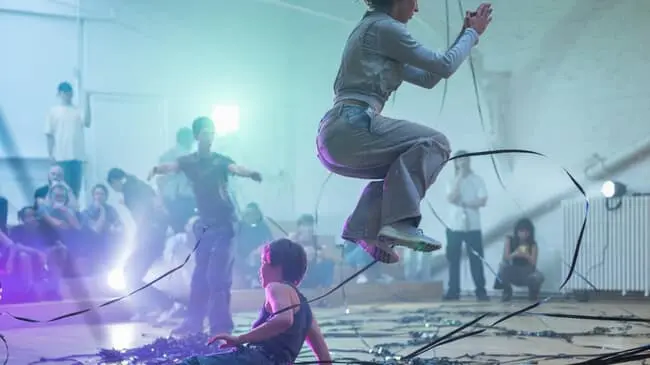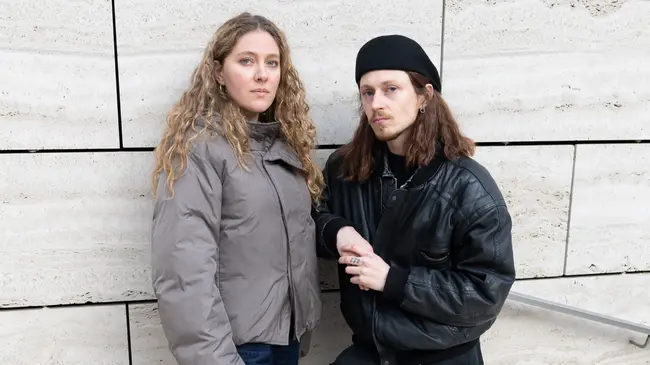Capturing memories and somehow confronting them

In Courtrai, Mélanie told us about her photos and her development as a young artist. While we visited Jan Kempenaer's exhibition on Belgian colonial monuments at Be-Part, we had conversations about the importance of taking a clear position regarding certain issues nowadays.
Interview by Bruna Martins
Photos shot by Line-Teta Blémont
How did you start out as a photographer?
In 2017, I started studying photography at ERG, Brussels. I originally chose the drawing option in the curriculum, before switching to photography when I realised there was a lot more for me to learn through this. At first, it was rather challenging; I had to prove to my teachers that I was worthy of my place there.
I was constantly surrounded by people who had a lot more experience than me, which at times made me question my legitimacy in the program. This feeling of doubt was sharpened at the outset of the COVID quarantine. I was worried about whether I would be able to work and stimulate myself enough in the highly restrictive conditions since I mainly work with portraits in direct contact with other people. These feelings were also shared by my teachers. However, everything ultimately turned out fine and I was able to have a lot of photography appointments during that period. This is when things changed for me; I finally started feeling more comfortable with my practice and my development as a photographer.
Can you tell me a bit about the development of your practice?
In the beginning, I really didn't know that much about photography. My relationship with it was largely related to my dad and my childhood. When I was young, he used to take photos all the time, which is why I have countless albums at home. He did this 'archiving' since he found it important for the family to always keep photo records of our memories.
My photos constitute physical proof of something that happened. It's about evocations of past moments
Later on, I also developed an interest in taking pictures of people, starting with my friends. At some point, I then began using Instagram to contact people for photoshoots. To be honest, my practice was never really oriented toward one specific objective or project. Instead, I tended to spontaneously combine two elements: taking photos and meeting people. Generally, my photos constitute physical proof of something that happened. It's about memories and evocations of past moments.
So, these moments are then closely associated with individual people, then taking shape of portraits, right?
Yes! A lot of people have also asked me why I take pictures of people of colour. These questions remind me of a Liz Arthur talk that I attended at FOMU. She is one of my favourite artists! During this talk, someone asked her a similar question and she replied with something like: 'I take pictures of people. I take pictures of people and they happen to be black' And I feel the same way. My portraits show the people that are part of my daily environment. There's no planning behind it; I take pictures of people.
What kind of feeling does the exhibition we just saw evoke in you?
I perceived a kind of detachment in the artist’s approach and this was somehow a bit frustrating. The photos we saw made me think about what the Becher couple used to do a lot: taking pictures in a very specific, calculated way while following some sort of protocol.
I see. And this could perhaps be seen as a slight contradiction, since this exhibition states that is not a mere compilation of archives about colonial monuments in Belgium…
From what I understood, the artist takes pictures of statues and monuments that have a link to Belgium's colonial past. But as a result, there was no real 'position' taken. In a way, the exhibition feels a bit sanitized, if you know what I mean. I don't know if this is necessarily a bad thing, but there was still a somewhat detached sentiment. For that reason, I had the impression that the artist’s aim was merely to archive.
Do you think that Jan Kempenaers' photos may be an attempt to remind us of the existence of these monuments that often go unnoticed, while perhaps inviting us to question their presence in public spaces today?
It´s true that we are in 2022 but it’s important to remember that, at some point, those monuments represented something and were even celebrated. There were artists who were commissioned to make them and it is somehow shocking that we still have to deal with these questions now.
Taking a clear position about specific matters is important in this day and age
At the same time, in the world we live in, it is important to be reminded of what happened in the past. Sometimes we do need physical remnants to understand what societies have been through. Maybe this is what the exhibition is about. Nevertheless, it can also be quite aggressive for some people to be confronted with. This is why, in my opinion, taking a clear position about specific matters is important in this day and age.
Different Class works with the interest of their community at heart.
Our work’s purpose is to foster a solid network for independent artists, those who love them, and those who want to support them. Become a member to contribute to the local Belgian art scene.





